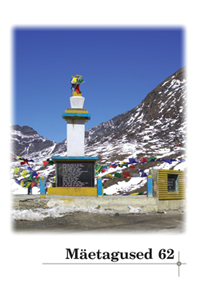Seened “keskaja sügise” kristlikus kunstis
Mushrooms in Christian art in the Autumn of the Middle Ages
Author(s): Ülle SillasooSubject(s): Customs / Folklore, Cultural Anthropology / Ethnology, Culture and social structure
Published by: Eesti Kirjandusmuuseum
Keywords: ethnomycology; Late Gothic art; mushrooms
Summary/Abstract: Medieval and Early Modern sources were researched for the depictions of mushroom species and their uses. Mushroom depictions in four paintings – the Wilton Diptych, the Madonna of Carinthian provenance, and two examples of the Crucifixion of Christ of Nuremberg provenance – were identified and discussed. The species shown in these works include Amanita muscaria, Clitocybe odora, Lactarius cf. lilacinus, Leccinium aurantiacum s.l., Lycoperdon perlatum, and Marasmius oreades. Mushrooms growing in fairy rings were found to be landscape metaphors alluding to the apparition of the Virgin Mary. Mushrooms shown growing near the white deer in the outer panel of the Wilton Diptych supposedly refer to both the mystical animal and the forest. Through the colour of the red-capped scaber stalk and the usage of the common puffball, the wounds, blood, and suffering of Christ are manifested. Like other vegetal symbols in the art of the period, mushrooms in these paintings reflect the knowledge, beliefs, and realities of ‘home’ environments of those depicted in the paintings.
Journal: Mäetagused. Hüperajakiri
- Issue Year: 2015
- Issue No: 62
- Page Range: 75-94
- Page Count: 20
- Language: Estonian

